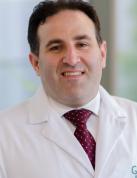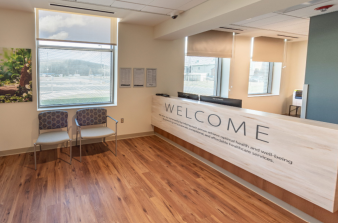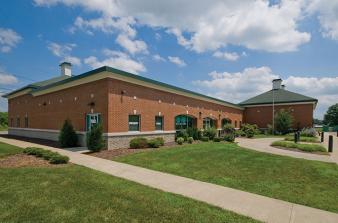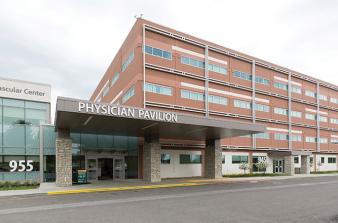Structural Heart
Led by fellowship-trained physicians recognized in their field of expertise, the structural heart program at Genesis has assembled a team of physicians that provide the best possible heart care for patients throughout Southeastern Ohio. Our team has years of training and experience with leading-edge procedures and advanced technologies.
Conditions we treat
Structural heart disease may be present at birth, or it can develop later in life. We use life-changing treatments to repair damaged heart valves, walls, muscle or tissue. Addressing structural heart issues can reduce symptoms such as weakness and shortness of breath, which not only can improve your quality of life, but also help prolong it.
We treat a variety of conditions for patients including:
- Aortic stenosis - Is the stiffening or narrowing of the aortic valve. Calcium build up is the most common cause. Aortic stenosis usually affects elderly patients with other medical risk factors which makes them better candidates for Transcatheter Aortic Valve Replacement (TAVR).
- Mitral valve regurgitation - Is a condition in which the heart's mitral valve doesn't close tightly, which allows blood to flow backward in the heart.
- Patent Foramen Ovale (PFO) - Occurs when patients are diagnosed with an opening, or hole, in the heart that did not close after birth. This birth defect can cause problems later in life, including stroke, and affect the control of blood flow between heart chambers.
Treatments and procedures
Genesis is the only hospital in the region performing innovative and minimally-invasive procedures for cardiac care. These new technologies and techniques allow our highly-skilled physicians to care for your heart while reducing downtime, scarring and pain after a procedure:
- MitraClip™ - Is a minimally invasive procedure that can reduce the risk of heart failure and stroke for patients with mitral valve regurgitation. Our physicians use a tube to insert the MitraClip implant through a vein in your upper leg and guide it to your heart, where it is attached to your mitral valve to help it close properly and restore normal blood flow.
- Patent Foramen Ovale (PFO) closure - The procedure to close a hole in the heart, not detected at birth, takes a much different route than in the past when open-heart surgery was required to correct the opening. Our physicians use a catheter to enter blood vessels to reach the heart. Once there, the catheter guides a device called an occluder to the opening, allowing it to expand and close the hole.
- Transcatheter Aortic Valve Replacement (TAVR) - Uses advanced imaging and small catheters to replace diseased heart valves. Instead of a large incision to the chest, physicians performing TAVR use a flexible tube to guide a new valve through a blood vessel to the heart. TAVR is minimally invasive, meaning patients have less pain and experience faster recovery times – usually needing just an overnight stay in the hospital.
- Transcatheter Mitral Valve Replacement (MVR)
- Left Atrial Appendage Closure - This implant can reduce the risk of stroke and eliminate blood thinners for patients with atrial fibrillation (AFib) not caused by a heart valve problem. During a one-time, minimally invasive procedure, WATCHMAN is inserted through a small tube from a blood vessel in the leg to the heart where it closes the left atrial appendage. Patients typically return home the next day and may be able to stop blood thinners in 6 months.










